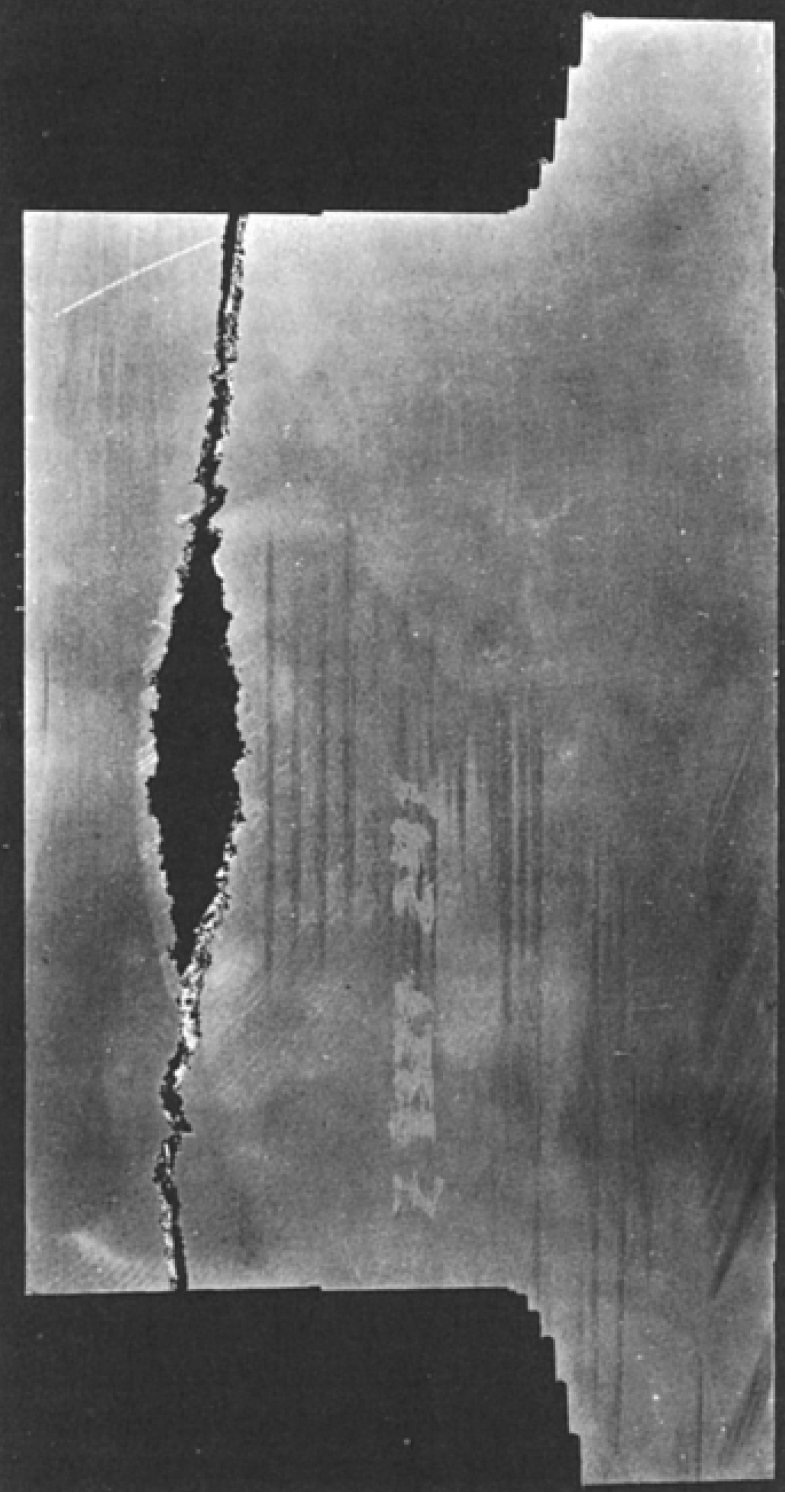
Alphabetical Index
Keyword Search
Casting Defects
Ingot Defects
Slab Defects
Drawing Defects
Forging Defects
Rolling Defects
Bearing Defects
Coating Defects
Corrosion defects
Fractography
Heat Treatment Defects
Machining Defects
Other Defects
Pipeline Defects
Polishing Defects
Rail Defects
Tool Steel Defects
Welding Defects
Internal Defects
Surface Defects
Internal + Surface Defects
Contact Us
Help
Home
Central discontinuity - Forging defects

Figure 1: Section through a heat-resistant alloy forging showing a central discontinuity that resulted from
insufficient homogenization during conversion. Step machining was used to reveal the location of the
rupture; original diameter is at right.
Defect name: Central discontinuity
Record No.: 3312
Type of defect (Internal/Surface): Internal
Defect classification: Forging defects
Steel name: Steel
Steel composition in weight %: No data.
Note: Internal bursts may also occur where the material is weak. For example, with ingot imperfections (such as pipe,
porosity, segregation, or inclusions), tensile stresses can be sufficiently high to tear the material apart internally,
particularly if the forging temperature is too high. Similarly, if the metal contains low-melting phases
resulting from segregation, these phases may rupture during forging. Ingot pipe, unhealed center conditions, or
voids associated with melt-related discontinuities may also induce center bursts if reduction rates are too severe
or temperatures are incorrect during working. The conversion practice to bar or billet must impart sufficient
homogenization or healing to produce a product with sound center conditions. An example of an unsound
condition that did not heal is shown in Fig. 1.
Reference: Not shown in this demonstration version.